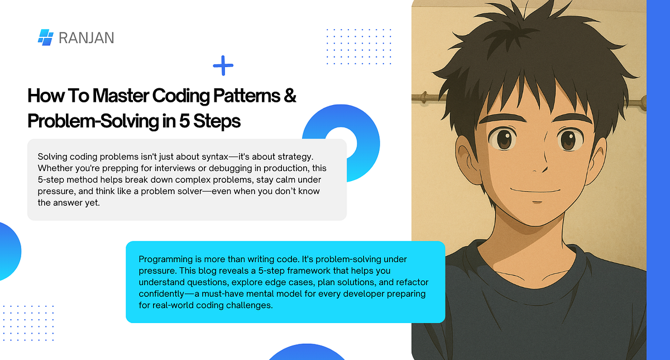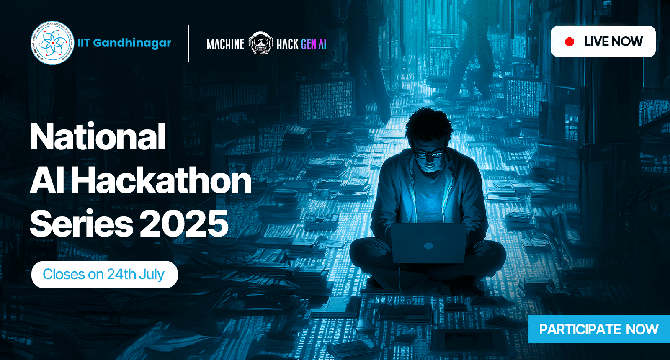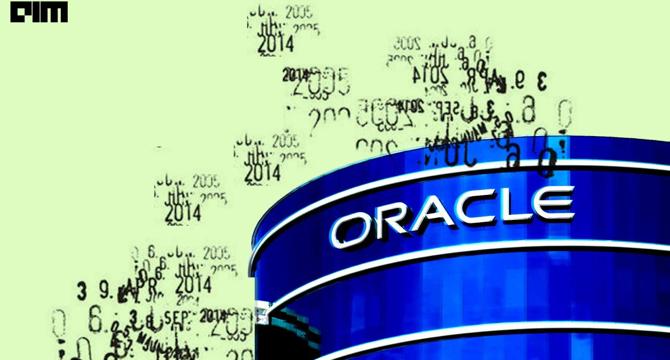Data Science News
Medium
69

Image Credit: Medium
5 AI-Powered Side Hustles That Need Zero Investment
- This article highlights 5 AI-powered side hustles that require zero investment and minimal skills.
- 1. AI Content Creation: Utilize tools like ChatGPT to create content for blogs, websites, and social media, offering potential earnings of $20–$100 per article.
- 2. AI-Powered Graphic Design Using Canva: Create designs without design skills, potentially earning $5–$50 per design.
- 3. AI Video Creation: Use tools like Pictory to make engaging short videos for platforms like YouTube Shorts, with potential earnings of $5–$100 per video project.
- 4. AI Voiceover & Audiobook Creation: Create voiceovers using tools like Murf AI, potentially earning $20–$150 per voiceover.
Read Full Article
4 Likes
Medium
32

Image Credit: Medium
Learning Problem Solving Patterns In DSA
- Patterns in DSA act as coding blueprints, providing reliable paths in problem-solving.
- One essential pattern, the Frequency Counter, aids in solving anagram challenges efficiently.
- Another effective technique is the Multiple Pointers Pattern when working with sorted arrays.
- The Sliding Window technique enhances performance in finding the maximum sum of elements.
Read Full Article
1 Like
Mit
183

Image Credit: Mit
Robotic probe quickly measures key properties of new materials
- MIT researchers develop robotic probe to rapidly measure photoconductance in new semiconductor materials.
- The autonomous system speeds up research and utilizes machine learning to guide decision making.
- The probe conducts over 3,000 unique measurements in 24 hours, aiding material discovery.
Read Full Article
11 Likes
Medium
195

Image Credit: Medium
How I Built a Mars Digital Twin – And Why It Might Shape the Future of Space Exploration
- Aybüke, a young engineer from Turkey, developed a Mars digital twin named PRIORITY as part of her undergraduate thesis.
- PRIORITY is a project that visualizes Mars in 3D, analyzes data patterns, predicts surface anomalies using AI models, and connects real NASA data to AI pipelines.
- AI is essential in space exploration for anomaly detection, regression modeling, surface classification, and reinforcement learning to navigate risks and optimize resources.
- The Mars digital twin project aims to benefit not only space agencies but also climate modelers, urban planners, educators, and anyone seeking to understand complexity and improve systems on Earth.
Read Full Article
11 Likes
Analyticsindiamag
114

Image Credit: Analyticsindiamag
AI-Powered Face Authentication Hits Record 15.87 Crore in June as Aadhaar Transactions Soar
- AI-powered face authentication technology for Aadhaar witnessed 15.87 crore transactions in June 2025, a significant increase from 4.61 crore transactions in the same month last year.
- Overall, 229.33 crore Aadhaar authentication transactions were conducted in June 2025, reflecting a 7.8% year-on-year growth.
- Aadhaar plays a vital role in India's digital economy by enabling access to welfare schemes and public services, with over 15,452 crore authentication transactions facilitated since its inception.
- The AI/ML-powered face authentication solution, developed by UIDAI, is widely used by various government entities and service providers, transforming the digital public infrastructure in India.
Read Full Article
6 Likes
Analyticsindiamag
134

Image Credit: Analyticsindiamag
MachineHack announces ML Decode & Data Sage Hackathon with IIT Gandhinagar
- MachineHack and IIT Gandhinagar are collaborating to host two hackathons: ML Decode and Data Sage, focusing on enhancing technical skills and pushing problem-solving boundaries.
- The hackathons aim to challenge participants in data science skills including statistics, probability, data visualization, and decision-making across various topics.
- Participants can expect fast-paced MCQ rounds, live leaderboards, and the opportunity to showcase their skills to receive certificates and exclusive access to masterclass sessions.
- ML Decode is for students and professionals interested in machine learning, while Data Sage is tailored for candidates with a strong technical foundation looking to showcase their data science expertise.
Read Full Article
8 Likes
Medium
138

Image Credit: Medium
Vault Apps on Smartphones
- Vault apps on smartphones are designed to conceal sensitive files and messages through encryption, providing users with a sense of security in the digital age.
- They operate by hiding content behind layers of encryption, making it difficult for security systems to detect them.
- The discovery of a vault app on a friend's phone prompted a deeper curiosity into their functionality, popularity, and the challenges they present for detection.
- The intersection of privacy, security, and advanced technology in the realm of vault apps highlights ethical dilemmas and intriguing developments.
Read Full Article
8 Likes
Analyticsindiamag
342

Image Credit: Analyticsindiamag
Nueromind Technologies Signs MoU with Fuel-Tech Platform Nawgati
- Nueromind Technologies has signed an MoU with Nawgati Tech to co-develop AI solutions for fueling, fleet, and energy sectors using CCTV video inputs.
- Nawgati's Aaveg platform monitors fuel stations, reduces pilferage, and ensures SOP compliance, while Phronetic's AI platform enhances efficiency by providing actionable insights.
- Phronetic will deploy its AI Agents within Nawgati's ecosystem to boost operational intelligence, automate customer interactions, and enable smarter decision-making.
- The collaboration aims to deliver impactful innovations tailored for the fuel, fleet, and energy sectors by combining Phronetic's AI capabilities with Nawgati's Aaveg platform.
Read Full Article
20 Likes
Analyticsindiamag
1.5k

Image Credit: Analyticsindiamag
Streaming is the New Cloud
- Data streaming platforms are crucial for AI adoption and enabling real-time data flow.
- Report shows 95% IT leaders find DSPs ease data access challenges for AI.
- 86% of organizations report ROI of 2-5x with increased DSP use.
- Confluent's platform aids in advanced AI capabilities and real-time decision-making.
Read Full Article
4 Likes
Analyticsindiamag
330

Image Credit: Analyticsindiamag
This YC Engineer Might Have Just Killed Remote Work
- Soham Parekh admits to working multiple jobs due to financial hardship.
- The engineer now focuses solely on working at Darwin Studios.
- Parekh refutes claims of using AI tools and misrepresenting his identity and location.
Read Full Article
19 Likes
Analyticsindiamag
225

Image Credit: Analyticsindiamag
Gurugram’s AVPL Announces $1 Mn Investment in Defence Drone R&D
- Gurugram-based AVPL International has announced a $1 million investment in research and development for defence drones in India to enhance unmanned aerial systems capabilities and reduce dependence on imported components.
- The investment aims to support the development of intelligent drones with swarm autonomy, counter-UAS technologies, high-altitude platforms for Himalayan operations, and expand manufacturing and training infrastructure.
- AVPL focuses on addressing critical gaps in India's drone ecosystem by stressing self-reliance through the creation of indigenous defence drones, technology integration, and workforce development.
- The company's broader drone strategy includes expanding training and manufacturing, developing various drone systems for military and civilian use, obtaining DGCA authorization for training, and training over 100,000 professionals.
Read Full Article
13 Likes
Analyticsindiamag
199

Image Credit: Analyticsindiamag
Google Finally Brings Veo 3 to India with AI Pro Subscription Access
- Google has launched Veo 3 in India through the Gemini app’s AI Pro subscription.
- Veo 3 allows users to create 8-second videos with sound, encompassing synthesised speech, background music, and sound effects.
- OpenAI co-founder Andrej Karpathy highlights Veo 3's impact on video creation and consumption, emphasizing the addition of audio in elevating content quality and the accessibility of video over text.
- Safety measures include visible watermarks and invisible markers on AI-generated videos to ensure responsible content creation.
Read Full Article
12 Likes
Medium
1.2k

Image Credit: Medium
Bridging Theory and Practice: Real‑World Projects That Boost Your Employability!
- Real-world projects play a crucial role in bridging the gap between theoretical knowledge and practical application in fields like data science and machine learning.
- Working on projects that simulate real business scenarios helps individuals develop critical thinking skills and adapt algorithms to real-world constraints.
- Completing real-world projects not only enhances technical skills but also improves soft skills, making individuals more attractive to recruiters.
- Incorporating project-based learning with industry-relevant tools and mentorship can lead to better job opportunities and career growth.
Read Full Article
13 Likes
Analyticsindiamag
492

Image Credit: Analyticsindiamag
OpenAI to Lease 4.5 GW Compute from Oracle for Stargate
- OpenAI is planning to lease 4.5 gigawatts of computing power from Oracle for its Stargate project to meet the AI firm's substantial computational needs.
- This lease signifies an extraordinary amount of energy, equivalent to powering millions of American homes, with each gigawatt being comparable to the output of a nuclear reactor serving around 750,000 homes.
- Oracle's recent cloud agreement, projected to generate $30 billion in annual revenue from fiscal 2028 onwards, includes the Stargate arrangement with OpenAI, part of a disclosed contract.
- Oracle plans to expand its data centre infrastructure across the US to support OpenAI's increasing demand, with potential locations in Texas, Michigan, Wisconsin, Wyoming, New Mexico, Georgia, Ohio, and Pennsylvania.
Read Full Article
14 Likes
Analyticsindiamag
1.1k

Image Credit: Analyticsindiamag
TCS to Push AI Transformation for 60 Singapore SMEs, Startups
- Tata Consultancy Services (TCS) is launching an innovation centre in Singapore to drive AI initiatives for 60 SMEs and startups.
- The facility at Changi Business Park will facilitate collaboration with experts to develop, prototype, and scale AI solutions.
- TCS plans to recruit 50 recent graduates from local universities to support the centre's functions in data science and cybersecurity.
- The centre aims to provide technology consulting expertise to SMEs and serve as a platform for fintech companies and start-ups to showcase products.
Read Full Article
19 Likes
For uninterrupted reading, download the app